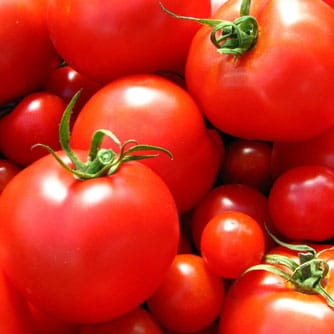In that humans naturally produce reactive oxygen species (ROS), which are necessary for a range of functions, including cell signaling, overproduction of ROS – which can occur as a result of high intensity exercise – may overwhelm the body’s antioxidant defenses and can lead to oxidative stress, a condition that is linked to an increased risk of various diseases including cancer, Alzheimer’s, and cardiovascular disease. Tomatoes, and their juice, are a rich source of ROS-countering antioxidants, including lycopene, carotenoids, Vitamin C, tocopherols, and polyphenols. Mats Harms-Ringdahl, from Stockholm University (Sweden), and colleagues enrolled 15 healthy men and women in a study in which participants performed 20 minutes of physical exercise at 80% of maximum pulse. Blood samples were taken before and 60-minutes after exercise. The subjects then consumed 150 mL of tomato juice (15 mg lycopene) daily for five weeks. They then re-performed the exercise. This was followed by a five-week washout period and then five more weeks of tomato juice consumption. The team observed that the initial bout of exercise increased levels of 8-oxodG, a marker of oxidative DNA damage, by 42%; no such increases were observed after the first five weeks of tomato juice consumption. After the five-week washout period, exercise increased levels of 8-oxodG by an average of 84%, but the added five weeks of tomato juice again prevented such marker increases. The study authors conclude that: “These data strongly suggest that tomato juice has a potential antioxidant effect and may reduce the elevated level [reactive oxygen species] induced by oxidative stress. “
Tomato Juice as Post-Exercise Beverage
Mats Harms-Ringdahl, Dag Jenssen, Siamak Haghdoost. “Tomato juice intake suppressed serum concentration of 8-oxodG after extensive physical activity.” Nutrition Journal, 11:29, 2 May 2012.




